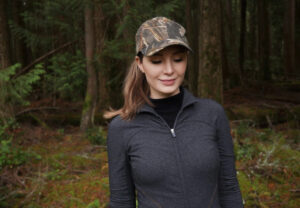The pioneer dream is deeply engraved in American culture and history. It’s simple but powerful: setting forth into the unknown, with just a few belongings and your immediate family, and creating a self-reliant, flourishing home in an unforgiving environment. As depicted in the (now resoundingly cancelled) Little House series by Laura Ingalls Wilder, it’s a dream that required practical skills, physical strength and mental fortitude.
It was also, always, an easier sell to men than to women, which is why frontiersmen often had to obtain a wife by mail order. What for a man might be a pioneering adventure might be, for his wife, an arduous daily grind of growing and preparing food, making and mending clothing, laundry, animal husbandry and so on, all with no family help and multiple children underfoot.
Over time, though, a slew of innovations — from cars to ready-made foods to labour-saving home devices — have made it ever easier to live life in a seemingly self-contained way. Perhaps most of all, this has liberated women to pursue individualist dreams just like men. As the American antifeminist Phyllis Schlafly once observed, women were liberated more by the washing machine than feminism.
But what if something was lost, as the grind disappeared? This was the view of perhaps the most controversial modern critic of technology: the late mathematician and domestic terrorist Ted Kaczynski, commonly known as the “Unabomber”. In his manifesto, Kaczynski argued that as “industrial society” developed, it corroded human freedom, leaving behind enfeebled, inhibited and “oversocialised” individuals unable to exercise full agency in the “power process”. He was so vehemently opposed to this perceived degradation that he pursued a campaign of anti-technology vandalism and letter-bombing that killed three and injured 23 more.
Obviously I don’t condone terrorism. But there’s something to the idea that labour-saving devices have stripped us of practical skills, making us more dependent on their services and infrastructure, even as they relieve us of effort. But if you can’t separate agency from effort, what does this imply for all those mothers condemned to the grind? This tension supplies much of the power, and also the controversy, surrounding the very contemporary cultural figure of the “tradwife”.
Across social media, these influencers document their labours as wives and mothers. In doing so, they make a virtue out of adding the very domestic chores back into their lives that earlier generations of women rejoiced in escaping. And this invites reflection. With such a reactionary message, why is their content so popular? Was Kaczynski on to something, about the need to escape “oversocialised” industrial society? And if so, what does this mean for women?
Among these figures, none is more popular — or, lately, more contentious — than Hannah Neeleman, dubbed “the tradwife queen” in a recent viral Times interview. On her Ballerina Farm social media channel, Neeleman documents the earthy aesthetic, agrarian lifestyle and expensively styled “back to the land” lifestyle she enjoys with her husband, airline heir Daniel Neeleman, and their eight children on a 328-acre farm in Utah. But if Neeleman’s popularity, output and controversy tell us anything, it’s that neither Phyllis Schlafly nor Ted Kaczynski is a good guide to the tradwife phenomenon.
In the Times interview, author Megan Agnew describes Neeleman’s home life with a clear insinuation that something is off. She hints that perhaps Neeleman is putting a positive gloss on a life of drudgery with an overbearing husband; she did, after all, give up a place at a prestigious ballet school for barefoot pregnancy and pig farming. Perhaps, too, she was pressured by the same overbearing husband into declining pain relief for her many home births. And perhaps her accomplishments have been pushed aside and her potential discarded: Agnew details the beauty queen costumes dumped in the garage, and the room Neeleman wanted as a dance studio but was instead turned into a homeschool classroom.
Agnew observes that she has barely a moment to speak to Neeleman without her being interrupted by toddlers, or talked over by Daniel. Where, we are invited to wonder, does this beautiful, gifted woman get to be a person, over and above being a dutiful wife and mother? Since the interview was published, it has incited a storm of speculation as to the health of her marriage and the meaning of the birthday egg apron, compassion for her obviously oppressed condition, as well as an equally spirited defence of her lifestyle (including from Neeleman herself).
So what’s really going on at Ballerina Farm? Is Hannah Neeleman oppressed? Did she have her dream stolen from her? Certainly, what’s depicted in social media often diverges from reality, and it is of course true that relationships that appear loving may have less happy backstage dynamics. Some purportedly “trad” marriages really are abusive. I’m not privy to any such gossip about Ballerina Farm, though, and have no interest in adding to speculation.
But what about the structure of Neeleman’s situation? Surely the mere fact of her being diverted from her dream of life as a prima ballerina to one of agrarian domesticity, pregnant every 18 months and besieged by sticky toddlers and farmhouse chores, reveals an “abused” woman whose chance of self-actualisation in the “power process” was stolen by a domineering man?
This, however, also misses the point of Ballerina Farm altogether: one that neither Neeleman’s would-be feminist rescuers or traditionalist defenders fully acknowledge. At face value, yes, the setting looks unnervingly antifeminist. But if you take as its message not just the content of the social media posts but the entire Ballerina Farm project, Hannah Neeleman emerges as neither classically “oppressed” nor “empowered”. Rather, she shows up as profoundly embedded in her life’s work, in a way that doesn’t map easily onto either the Kaczynski-style pioneer libertarian vision or the high-tech world that emerged from that vision to “liberate” women in the Schlafly sense.
The suspicion directed at “tradlife” is directionally correct, in this sense: if Kaczynski got his way, and industrial society vanished tomorrow, it might well return some practical agency to individual men from bureaucracies and complex social structures. But it would also remove the majority of women from public life, into the everyday grind of subsistence chores with children.
All the most contentious aspects of Ballerina Farm discourse are animated by this intuition. For example, the Times interview and its swarm of respondents on TikTok and X have all made much of the fact that the Neelemans don’t have a nanny to help with the smallest infants, because Daniel doesn’t want one. This detail is consistent with the self-reliant pioneer image, but evidently a greater burden on Hannah than Daniel. Also consistent with “going it alone” pioneer-style, most of her babies were home births, without pain relief. How far was this her choice? Who knows?
But perhaps the real question is: how “pioneer” is their life anyway? The rugged, self-contained Little House schtick is only believable as long as you never ask yourself: who’s filming? I can enjoy watching Neeleman making a “perfect summer lunch” of sourdough flatbreads, pesto and cheese all from scratch — including making and straining the cheese — because I choose to look past the obvious fact that it’s all confected for the cameras. Doing all that would be an insane amount of work just for lunch, for someone with eight kids and farm chores, unless she had a ton of help.
But, very obviously, she does have a ton of help. For starters, with production values that good there’s likely a crew on-site to assist with lighting, shooting, editing and publishing her all-natural-looking kitchen creations. Neeleman herself has detailed their 30+ employees, and shared footage of the (considerably less artfully styled) space where Ballerina Farm Oompa-Loompas package and dispatch products from the show’s multimillion-dollar spin-off food and lifestyle brand. Their farm-cum-home-cum-studio is clearly a hive of activity and people, all the time. As the interview notes, there are also domestic cleaners, plus a home tutor to educate the older children.
No, Hannah Neeleman doesn’t have a nanny for the babies. But nanny or no nanny, there is no shortage of people about to keep an eye on a swarm of kids. This is not Little House on the Prairie, with no one for miles in any direction but Ma and Pa and the brood. And nor, as evidenced by the fact that both Neelemans are actively engaged in the Ballerina Farm enterprise, is this a “traditional” domestic setup on the homemaker-breadwinner model.
This split between working husband and dependent wife, often glossed as the “trad” bit in “tradwife”, dates from the industrial era. That is: it’s not “traditional” at all, but distinctively modern. It’s also the model that, over time, drove many of the dissatisfactions challenged by feminism. But Hannah Neeleman is emphatically not a “tradwife” in this sense: more accurately, she’s a tradewife: a mother who works within an economically productive household.
Ballerina Farm is both a home and a tightly run and obviously profitable business. In it, both Daniel and Hannah are engaged in distinct but equally vital roles. It’s a lifestyle that more closely resembles the pre-modern era, than anything “trad” in the “tradwife” sense. But it’s not an attempt to go back to the pre-industrial era either. On the contrary, Ballerina Farm is only possible because it’s not a low-tech project on the Uncle Ted template.
After all, none of it would be possible without the internet: Daniel Neeleman’s IRL farming exists in symbiosis with his wife’s engagement farming. Unlike the many miserable farmers living hand-to-mouth as supermarkets squeeze their margins, Daniel can charge $139 for a box of croissants and sausage meat. For him, the difference between this and American farmers’ more usual elevated suicide risk is his glamorous, internet-savvy wife. Who knows what their relationship is like behind closed doors; but in terms of money and power, I have no trouble believing Hannah Neeleman’s characterisation of them as “co-CEOs” of Ballerina Farm.
Seen in this light, as a family business blending high and low tech, Ballerina Farm isn’t propaganda for the “pioneer” model or its suburban successor, the bourgeois housewife. What the Neelemans have constructed is closer to a 21st-century update on a far older domestic template: the preindustrial “productive household”. That is, a home that is also a workplace, in which everyone is economically active. Even the Neelemans’ large number of full-time staff recalls the extensive historic employment of servants in productive households.
And perhaps this gives us a clue as to what’s really driving Ballerina Farm discourse: envy. For a 21st-century “productive household” of this kind is not available to all. More than ever, the internet has made it possible for mothers to have it all, after a fashion: the rewarding, economically active life, the big family, the beautiful home, all woven together with the remote-working possibilities opened up by the internet. But not all women. Just those with the skills, the money, the charisma, the space for a home office — and a spouse who shares the vision.
If that’s you, you can enjoy your flexible, rewarding career from home, with half an eye on the kids, the home help, and the rising sourdough. For everyone else, there’s the same old juggling as ever — and scrolling through Ballerina Farm as you commute.
Disclaimer
Some of the posts we share are controversial and we do not necessarily agree with them in the whole extend. Sometimes we agree with the content or part of it but we do not agree with the narration or language. Nevertheless we find them somehow interesting, valuable and/or informative or we share them, because we strongly believe in freedom of speech, free press and journalism. We strongly encourage you to have a critical approach to all the content, do your own research and analysis to build your own opinion.
We would be glad to have your feedback.
Source: UnHerd Read the original article here: https://unherd.com/




